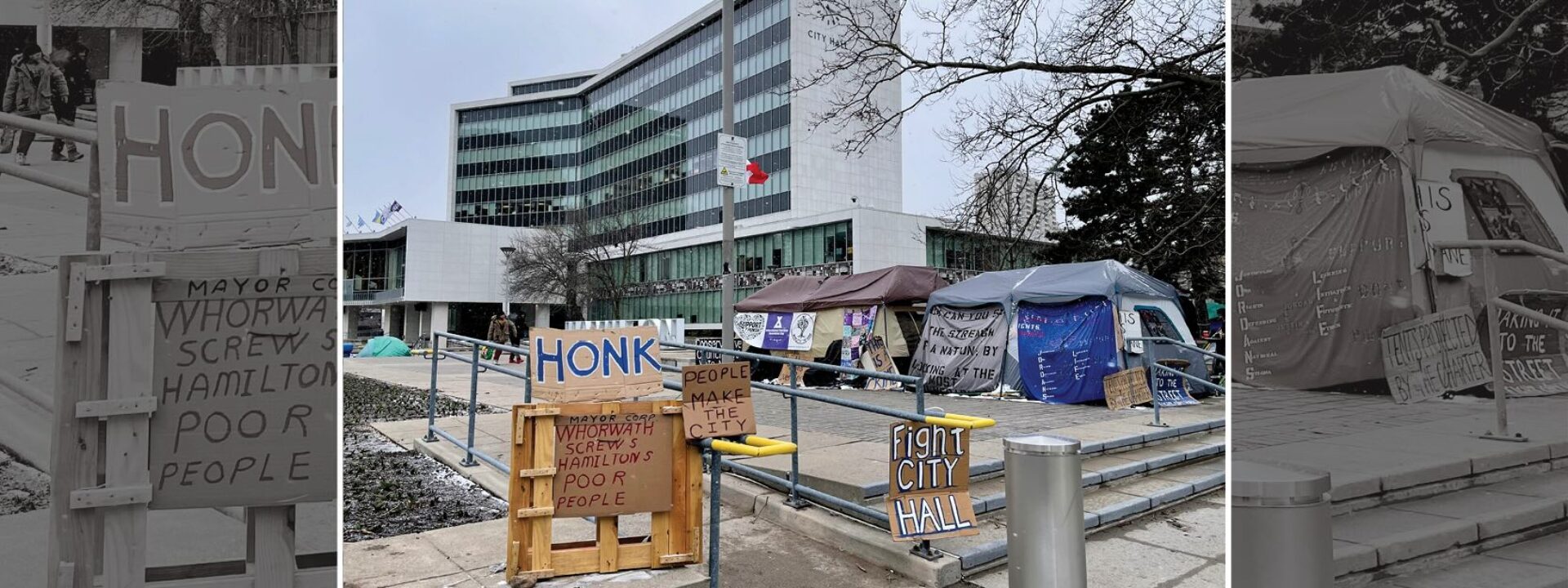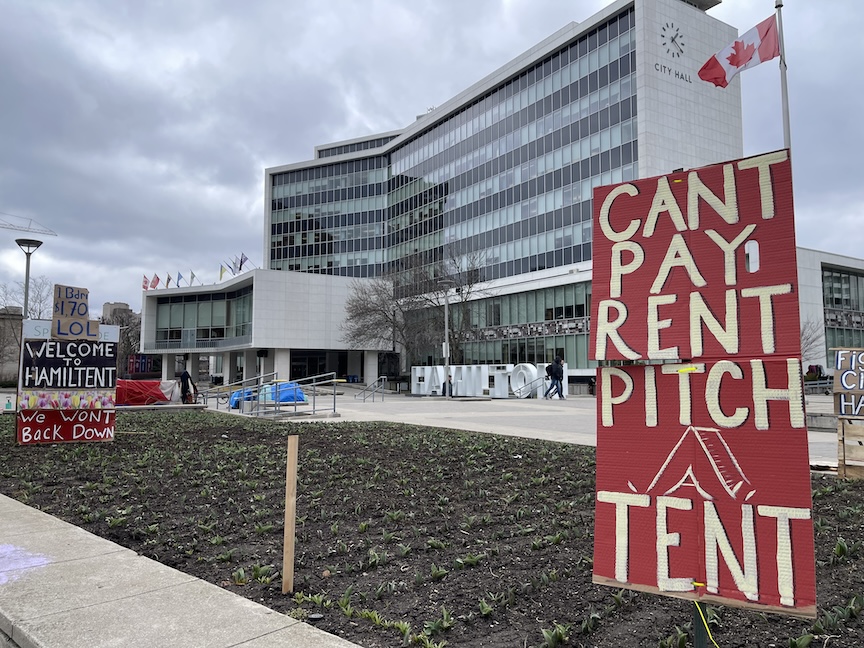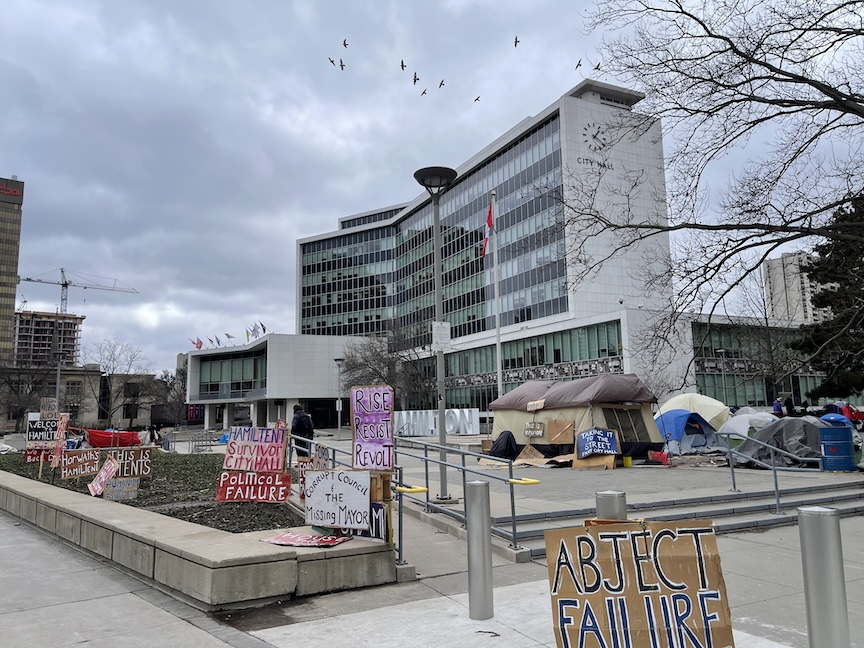Hamilton’s affordability emergency: Words vs action

Council’s flub of an affordable housing project on a parking lot in Stoney Creek has thankfully been vetoed by the mayor. It’s time for Hamilton to act on the housing emergency that’s been declared.
On April 12, 2023, Hamilton city council voted unanimously to declare a state of emergency related to parking.
Recognizing that lack of access to parking is a major public health crisis, the motion urged the province to establish a multi-sectoral task force to develop a plan to address the crisis and called on the province to increase funding for people who cannot afford parking.
This followed similar declarations from Toronto, Ottawa and Niagara Regional councils, and Hamilton council also sought to to coordinate support among the other members of the Association of Municipalities of Ontario (AMO).
Wait, did I say parking? Sorry, I meant housing.
Like most Canadian cities, Hamilton is in the midst of a historic housing crisis. Squeezed by rising demand, slow supply growth and high interest rates, home-seekers have limited options and crushingly high costs. For too many people, there is simply no housing available at all.
Given council’s unanimous support for a housing emergency declaration, one might be forgiven for assuming that this most fundamental priority would drive every subsequent choice.
But this is Hamilton, where civic strategy too often goes to die. So this past February, councillors deadlocked 8-8 on a staff proposal to use a free municipal parking lot in downtown Stoney Creek as the site for 67 new affordable housing units.
The surface lot, on the block bounded by Lake Avenue South, King Street West and Mountain Avenue South, currently has 162 parking spots. The housing proposal would remove 57 spots but then add back 30, for a net reduction of 27 spots or 17 per cent. According to staff observations, the lot is never more than 80 per cent full.
The question should really be: why isn’t the entire lot being converted into housing? Why is a downtown block being wasted on such low-value use in the first place?

But there was local pushback against even the more modest plan, and in a city that for decades has prioritized fast, easy driving above every other civic objective, enough councillors went along with the NIMBY opposition to desperately needed housing to kill the proposal.
This decision was so egregious that it motivated anti-poverty activist Angela Vos to protest by establishing an encampment in the City Hall forecourt. As of this writing, there are dozens of tents and an estimated 85 people, many of them unhoused, in front of City Hall in an ongoing demonstration called “Hamiltent.”
Eviction notices were issued to the protestors.
(Editor's note: After about two months of protests, the encampment was cleared out in early April.)
Kudos to the eight council members who voted to put policy ahead of parochial pandering: Mayor Andrea Horwath, Maureen Wilson (Ward 1), Cameron Kroetsch (Ward 2), Nrinder Nann (Ward 3), Tammy Hwang (Ward 4), John-Paul Danko (Ward 8), Craig Cassar (Ward 12, Ancaster), and Alex Wilson (Ward 13, Dundas).
Fortunately, in this case, Mayor Andrea Horwath decided in late March to use her new strong mayor powers to override the vote and approve the project. Council could still overrule the mayor’s veto with a two-thirds majority, but that seems unlikely at this point.
Notwithstanding this flub, Hamilton actually has been making some progress in adding new housing. In 2023, 4,142 new housing units began construction in the city, which hit 120 per cent of the provincial target and meant Hamilton qualifies for $17.6 million in provincial funding for housing-related infrastructure.
2023 was a banner year for building in Hamilton, with a record-breaking $1.7 billion in residential building permits, plus another $850 million in industrial, commercial and institutional permits.
The Ontario government has set a target of 1.5 million new homes by 2031, of which Hamilton is expected to provide 47,000. This may seem like a high number, but for comparison, over the 12 months from April 1, 2022 to April 1, 2023, Ontario’s population grew by 504,000 (and Canada as a whole grew by 1.2 million).

If growth continues at that rate, the province will need to add 200,000 housing units a year just to stand still, let alone increase the ratio of housing to people. Adding 1.5 million homes through 2031 works out to just 167,000 units per year.
Though realistically, it is unlikely that Canada will continue to grow by a million people a year. The federal government announced in November that it is aiming for around half that annual number through 2026.
But while the overall housing shortage is pervasive, the shortage in specifically affordable housing is devastating. Over the past decade, Hamilton has lost four times as many affordable units as it has gained – many of these through so-called “renovictions” in which the property owner evicts tenants living in affordable units and renovates them to be able to charge much higher rents.
To council’s credit, it passed a first-in-Ontario anti-renoviction bylaw in January under the leadership of Nann and in response to years of advocacy from Hamilton ACORN. Under the new rules, property owners must first apply to the City and produce a building permit as well as proof from an expert that eviction is necessary to undertake the renovations before they are allowed to renovict tenants.
Landlords must also either provide alternate housing or else financially compensate tenants they plan to evict, and they must actively provide a pathway for tenants to return once the renovations are complete.
The City also established a housing secretariat to focus on increasing the supply of affordable housing. The project channels federal, provincial and municipal funding into the most cost-effective projects to build, acquire and retain affordable housing and provide support services to ensure successful tenancy.
But visionary plans are only as good as the power of execution. The real test is whether council actually empowers staff to clear the bureaucratic obstacles to fast action.












